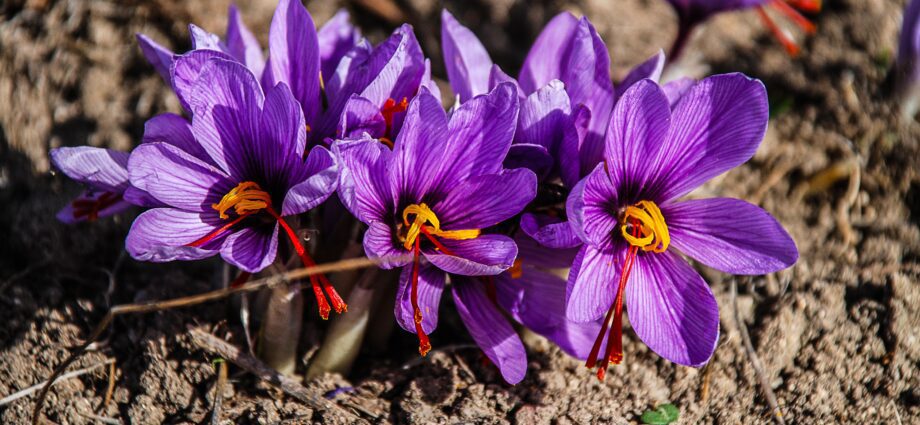Contents
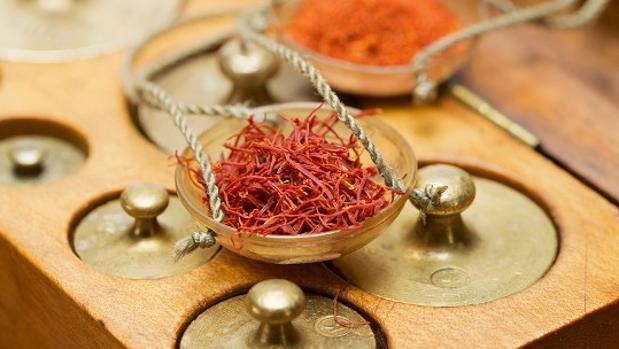
It is the star ingredient of great classics of international cuisine such as bouillabaisse (typical fish soup of Provençal cuisine), risotto Milanese and, of course, paella. It is also a colorant, a cosmetic, a natural medicine and, of course, a luxury good, since its price can reach 30.000 euros per kilo. We talk about saffron, the most expensive spice in the world, but also the most powerful, versatile and even mythological.
The “red gold”

The price of saffron is high and has been so forever and constantly. Bill John O’Connell en The Book of Spices that back in the thirteenth century the Countess of Leicester paid for six months from 10 to 14 shillings for half a kilo of saffron. A real nonsense considered that pepper cost just over 2 shillings and coriander a handful of pence. Today, a kilo of this luxury ingredient can cost from 5.000 to 30.000 euros.
A spice “limited edition”
Saffron’s stellar price is due both to its indisputable value in the kitchen, as it gives color, flavor and aroma to each dish, as well as to its complicated manufacturing process. Saffron hardly grows spontaneously to begin with. Being a triploid plant, that is, with an odd number of chromosomes, it needs the hand of man to reproduce and develop. Each bulb takes two years to bloom and normally it gives a single flower, in the month of September. The flowers grow very low in the ground and are handpicked first thing in the morning, before they open and can be damaged by rain, ice or sun. Each flower only has three stigmas, the spice itself, which have to be separated by hand from the flowers with great care throughout the twelve hours following the harvest. To get a kilo of saffron you need up to 250.000 flowers. In addition, it must be taken into account that each harvest does not exceed 50 kilos. All of these factors make saffron a limited edition spice by nature.
´Asfar, when luxury is even in the name
Saffron has been known since ancient times and since ancient times it has been synonymous with luxury. Of oriental origin, this plant quickly achieved great commercial value in Europe as a natural dye for clothing. Its name, similar in many languages, comes from the Arabic word sahafaran, which in turn derives from ‘asfar, yellow. The intense and luminous yellow hue that the stigmata of this plant are capable of providing to the tissues made its fortune among the privileged classes, acquiring a meaning both caste and ritual. In the ancient and eastern towns, saffron yellow was associated with royalty and to the rites of fertility, abundance and strength. In Asia, saffron is a symbol of hospitality and well-being and in India it is used to mark the foreheads of those who belong to the highest castes.
The best saffron in the world
The coloring power of saffron is the main indicator (in addition to flavor and aroma) of its quality. The higher the values of crocin, the carotenoid responsible for the color of the stigmata, the higher the category to which saffron belongs. In Spain, the highest category is the Coupé, with values above 190. Iran is the world’s largest producer of saffron and can boast of two of the most sought-after varieties in the world. Sargol, completely red saffron, without yellow or white parts, which are removed during the peeling of the flower, separating the stigmas of the style. Its crocin values are higher than 220 and its price, according to its premium quality, around 15.000 euros per kilo. The Negin, literally “Ring diamond”, is considered the best saffron in the world: it has the same high quality and intense color as Sargol, but it is a little longer (about 1.5 cm), thick, almost without breaks and very pure.
A kind of legend
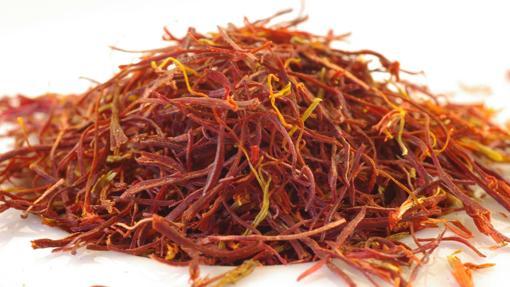
Saffron has always been a spice with great seductive power. The Greeks made a place for him in his prolific mythology, relating the birth of the saffron flower – whose scientific name is Crocus Sativus – with the blood that flowed from a wound on Krokos’ forehead while he was playing a record with his friend Hermes. Another legend tells that a knight of the Crusades brought with him a single saffron bulb from the Holy Land to England, hidden in a hole in his staff, in order to do good to his country. In the Middle Ages, newlyweds used to make crocus flower crowns to ward off madness. And it is that for a long time the medicinal virtues of this plant have been trusted as well as the culinary ones. Today saffron is used mainly in cooking, but it is still attributed the ability to facilitate digestion and blood flow in the pelvic area, among others.
The false saffron
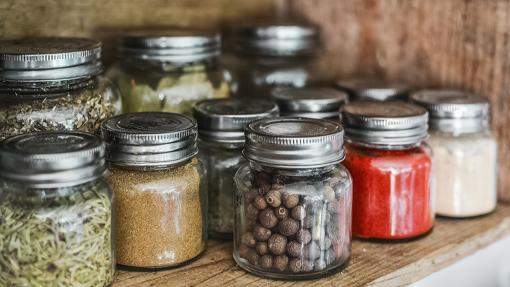
Like all luxury goods that are respected, saffron is the victim of numerous counterfeits. The most common is the one that is carried out thanks to the flowers of safflower or safflower, commonly called American saffron and bastard saffron. The flowers of this oriental plant are used above all to color dishes, being its taste more bitter compared to saffron. The marigold, arnica and royal poppy flowers, appropriately cut, also serve for “simulate” the stigmata of saffron. The “Indian saffron” noIt is nothing but turmeric, a spice that is obtained from a root similar to that of ginger and that is also characterized by a beautiful yellow color, the only trait that it shares with saffron (karkom in Hebrew, kurkum, karakum in Arabic, from there his name). Sometimes some oil is added to the saffron or sold without drying it properly so that its weight and, consequently, its price, increases.
María José San Román, the “queen of saffron”
As expected, saffron also occupies a privileged place in haute cuisine restaurants. The chef Maria Jose San Roman declares his unconditional love for this product from the kitchen of Monastrell, restaurant with a Michelin star located on the Paseo Marítimo de Alicante. One of the dishes that are part of the letter and the menu this season is the Red prawn with its coral in saffron oil and caviar saltFor which it uses saffron strands infused for 4 hours and at 65º in extra virgin olive oil of the royal variety. A luxury squared. San Román also gives its name to a small saffron production, a Premium brand that is sold only and exclusively in its four restaurants.
Tricks to enjoy 100% saffron

Then look at the label to find out where it came from and make sure it complies with international quality standards It is the first rule to observe to minimize the risk of fraud. The second, obviously, is to buy it in strands and not in powder, since in this way it is easier to tell if the saffron has been adulterated or not. The aroma of saffron It has to be intense and clean and its flavor slightly bitter. The more recent and dry, the better, because if it has been more than a year since the harvest and if it is very humid, its quality decreases. It has to be kept in airtight metal or, better still, glass containers. As if it were a precious family jewel. No more no less.
A spice on the dresser
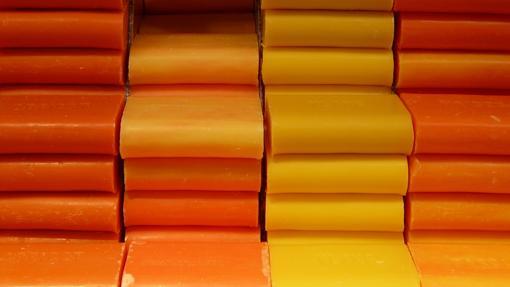
Saffron is a very old beauty secret. In Crete it was used to make lipstick and perfumes and in Egypt to refresh bedding. As always when talking about beauty there is an anecdote starring Cleopatra. They say that the famous Egyptian queen, a master of the arts of seduction, bathed in mare’s milk flavored with saffron before a love affair. The Romans burned saffron As if it were incense, medieval monks used it with a mixture of egg white to make their manuscripts shine like gold and Venetian women in the XNUMXth century resorted to this spice to give your hair a hue worthy of a Titian painting.
La Melguiza, the temple of saffron
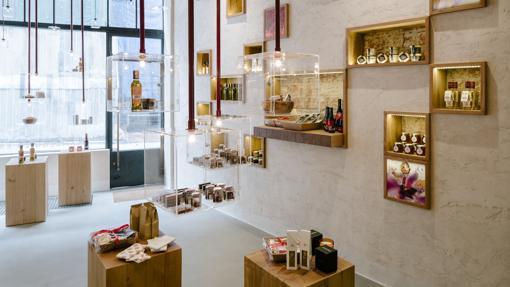
Organic saffron and Premium, white chocolate with saffron and cardamom, duck pate with saffron, flaked salt with saffron and even natural soap with rosehip, clay, argan and saffron. Located in the heart of the most traditional Madrid, a few steps from the Plaza de Oriente and Calle Mayor, La Melguiza It is an exclusive space exclusively dedicated to Spanish saffron. Here the “red gold” is shown in all its versatility in a cozy and elegant setting that deserves a trip in itself. The products, among which some wonderful Saffron Clouds stand out, can also be purchased through the online store. We no longer have excuses for not getting any of those treasures.










